
Bears are carnivoran mammals of the family Ursidae. They are classified as caniforms, or doglike carnivorans. Although only eight species of bears are extant, they are widespread, appearing in a wide variety of habitats throughout the Northern Hemisphere and partially in the Southern Hemisphere. Bears are found on the continents of North America, South America, Europe, and Asia. Common characteristics of modern bears include large bodies with stocky legs, long snouts, small rounded ears, shaggy hair, plantigrade paws with five nonretractile claws, and short tails.

The brown bear is a large bear species found across Eurasia and North America. In North America, the populations of brown bears are called grizzly bears, while the subspecies that inhabits the Kodiak Islands of Alaska is known as the Kodiak bear. It is one of the largest living terrestrial members of the order Carnivora, rivaled in size only by its closest relative, the polar bear, which is much less variable in size and slightly bigger on average. The brown bear's range includes parts of Russia, Central Asia, the Himalayas, China, Canada, the United States, Hokkaido, Scandinavia, Finland, the Balkans, the Picos de Europa and the Carpathian region, Iran, Anatolia, and the Caucasus. The brown bear is recognized as a national and state animal in several European countries.
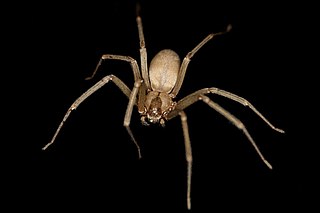
The brown recluse, Loxosceles reclusa, Sicariidae is a recluse spider with necrotic venom. Similar to those of other recluse spiders, their bites sometimes require medical attention. The brown recluse is one of three spiders in North America with medically significant venom, the others being the black widow and the Chilean recluse.

Agaricus bisporus is an edible basidiomycete mushroom native to grasslands in Europe and North America. It has two color states while immature – white and brown – both of which have various names, with additional names for the mature state.

The brown trout is a European species of salmonid fish that has been widely introduced into suitable environments globally. It includes purely freshwater populations, referred to as the riverine ecotype, Salmo trutta morpha fario, a lacustrine ecotype, S. trutta morpha lacustris, also called the lake trout, and anadromous forms known as the sea trout, S. trutta morpha trutta. The latter migrates to the oceans for much of its life and returns to fresh water only to spawn. Sea trout in Ireland and Britain have many regional names: sewin in Wales, finnock in Scotland, peal in the West Country, mort in North West England, and white trout in Ireland.

The Herminiinae are a subfamily of moths in the family Erebidae. The members of the subfamily are called litter moths because the caterpillars of most members feed on dead leaves of plants, though others feed on living leaves, and/or the mushrooms of fungi as in the case of genus Idia (moth).
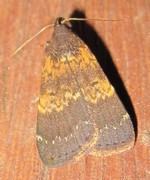
Hydrillodes is a genus of litter moths of the family Erebidae first described by Achille Guenée in 1854. Its validity is somewhat disputed.
Udea uliginosalis is a species of moth in the family Crambidae. It is found in Great Britain, Spain, France, Germany, Switzerland, Austria, Slovenia, Slovakia, Poland, Romania, Bulgaria, Serbia and Montenegro, Albania and the Republic of Macedonia.
Hydrillodes aviculalis is a species of litter moth of the family Erebidae described by Achille Guenée in 1862. This species is known only from Réunion where it is found at elevations above 500 m in primary forests.
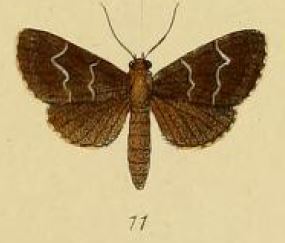
Hydrillodes janalis is a species of moth of the family Erebidae described by William Schaus and W. G. Clements in 1893. It is endemic to Sierra Leone.
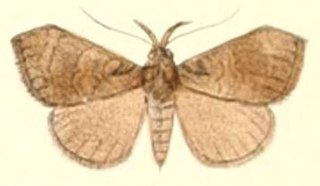
Hydrillodes truncata is a litter moth of the family Erebidae. It was first described by Frederic Moore in 1882 and is found in India.

Hydrillodes abavalis is a moth of the family Erebidae first described by Francis Walker in 1859. It is found in Sri Lanka and Borneo.
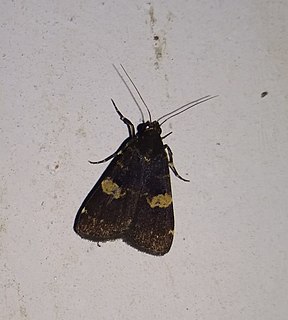
Hydrillodes gravatalis is a moth of the family Erebidae first described by Francis Walker in 1859. It is found in the Indian subregion, Sri Lanka and Sundaland.
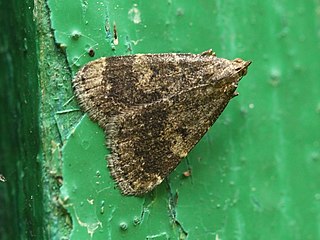
Hydrillodes morosa is a moth of the family Erebidae first described by Arthur Gardiner Butler in 1879. It is found in Sri Lanka, Myanmar and China-Korea border.
Hydrillodes surata is a species of moth of the family Erebidae. It is found in New Zealand at the Kermadec Islands, New Hebrides, Samoa, Tonga.











